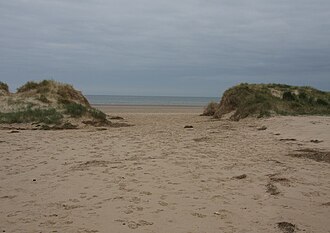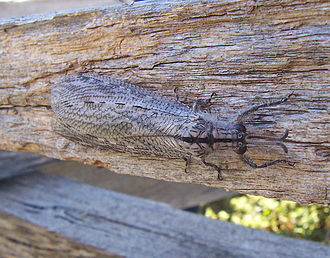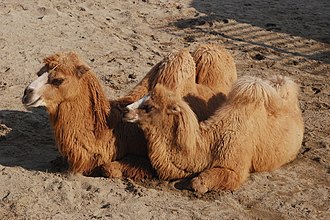1
Dunes are unstable hill or mountain size formations composed entirely of sand. Dunes come in many shapes, occur in a variety of climates and are constantly changing. The sand types and colors also vary with the geographic location and geologic history. Sand dunes are found along sea-coasts, lakeshores, deserts and river valleys (Levin, 1990) (Maun, 2009).
2
There are 4 things needed in order for dunes to form :
- Sand and lots of it
- Space to put the sand
- Wind from predominately one direction
- Water and wave action (coastal areas)
3
3a
Dunes are formed by surface creep by particles of sand rolling along on the ground. This is the slowest method of dune formation.
3b
Dunes are formed by particles of sand jumping along at regular intervals. This method of dune formation is faster than surface creep, but slower than suspension.
3c
Dunes are formed by particles of sand, fully airborne, and can traveling a long distance before landing. This is the fastest method of dune formation.
4
Dunes arrange themselves in a variety of shapes as listed below. There are five general categories and within each category are simple, compound and complex.
Barchans
Barchans are the most mobile of all dune types, migrating many feet every year. They have what are called tips or horns pointing downwind and are wider than they are long.
Star Dunes
Star dunes are the least mobile of all dune types due to changing wind patterns that keep it basically in one place. The ridges are in the shape of a star. Formed by wind blowing from several directions, the sand is pushed up.
Linear or Longitudinal Dunes
Linear or longitudinal dunes are long, deep troughs forming many straight rows, all due to strong winds that always blow in one direction.
Parabolic
Parabolic dunes are transitional between transverse and longitudinal. They feature U-shaped depressions and slip faces on the outer edges and over the top. Also called blow-out, winds come from one direction only and the structure is stabilized by vegetation on both sides. Common in coastal areas.
Dome
Dome dunes are circular or oval mounds with no slipface.
5
Succession is where one community naturally changes overtime and finally is replaced by a different community.
The major steps in succession found in dune communities are listed below.
- Beach
- There is little or no time for plants to take hold. Plants and animals that live here must be able to grow in sand, desert like conditions, relentless wind, extreme temperatures and intense sunlight. Scavengers of all levels of the food chain visit regularly to eat remnants of washed ashore fish, birds, animals and insects. The beach is generally divided into lower, middle and upper sections.
- Foredune
- The dunes closest to the beach and water. They receive direct impact of storms. This level has some plant species, which slow the wind-driven sand and allow dunes to form. Open sand is pretty much covered, yet very sensitive to human disturbance. Sometimes winter storms can send waves or spray up into this zone.
- Interdunal Wetland
- These form in a valley or trough between dunes. Frequently this is at the water table and is often host to wetlands and small inland lakes, also home to unique and rare or endangered species.
- Dune Forest
- These are found several hundred meters from shore and left undisturbed can produce a sufficient layer of topsoil to support climax species such as large trees and a large variety of plant and animal species. Equilibrium has been established, no new species are set to come in.
6
Blowouts are open sand areas that are trough or saucer shaped in otherwise stable, plant covered dunes. The wind combined with vegetation instability is to blame. Blowouts can be caused by fires, plant diseases, wind storms, grazing of animals, human disturbances such as hiking off marked trails, off road vehicles, and clearing the area to build homes. Blowouts eventually stabilize. The farther from the coast, the faster the recovery due to lessened wind speed; pioneer plants first, then shrubs and trees. Blowouts cause a complete reversal of succession back to stage one. The best way to help a dune is to stay on the trails!
7
Pioneer plants are fast growing and are responsible for initial dune stabilization. Dune stability would be literally impossible without these pioneer plants. They must be able to withstand very harsh conditions; water spray, blowing and drifting of sand, low nutrient levels, flooding, extreme temperature changes, high wind for long periods of time, desert like dryness and high salt levels. Fast reproduction and colonization are a must. The root system is uniquely specialized to grow both down and across very quickly with new shoots popping out at regular intervals. This allows large areas of sand to be stabilized in a short period of time. The purpose is to trap blowing and drifting sand. These plants are all about business; long roots (increase moisture absorption), often covered in waxy coatings (retain water), smaller or rolled leaves (reduce surface area exposure), unpleasant taste to herbivores (longevity) and have thick, scaly stems or bark (stability). Some have pretty flowers, others do not.
Beach Grass, Marram Grass
Always found in the zone directly behind the beach, thrives in drifting sand. A very stiff grass with a very extensive underground root system capable of sending new shoots up at any point. It has teeth pointing towards the end, a sharp tip. It also has a seedhead spike.
American Sea Rocket
Found on seashores and coastal dune communities on a worldwide scale. It has waxy, thick leaves and its tiny flower clusters are light purple to white depending on geographical location. This plant bears two sectioned fruits. The seeds fall out and the membrane that was holding the seeds stay attached.
Beach Morning Glory
A vine that grows in beach and foredune habitats, tolerates salted air. The seeds float and are not damaged by salt water. The flowers are insect pollinated.
8
Cottonwood Tree
This tree has the ability to grow roots at any point of its buried trunk, grows rapidly from the top. It is very difficult to determine the true height of the tree(s) due to what is buried below the dune! Only the top might be exposed of a large, mature tree. Commonly found in Lake Michigan sand dune environments.
Shore Pine
Native to the western United States, this tree is often found in sandy environments and coastal sand dunes of the Pacific Ocean. This tree is most often found with strange forms, stunted growth and deformities all a result of unidirectional, strong winds. The shrub communities where this tree grows are usually 1-3 meters high, very quickly developing into Shore Pine forests.
Century Plant
Native to the southwestern United States and northern Mexico, this plant easily keeps up with the constant blowing and drifting of sand. They thrive on sandy slopes and dry, rocky environments. Their root system is a widespread, dense mass just below the surface as to absorb any moisture, also stabilize the terrain. This plant can grow 2 inches per day; the flowering stock can grow 1 foot per day. Some heights of mature plants range from 15 to 30 feet tall. They bloom just once in their lives; the pale yellow flowers are bat pollinated.
Pitcher’s Thistle
This plant only grows on shorelines or in sand dunes of the Great Lakes in the states of Michigan, Indiana, Wisconsin and Ontario, Canada. It is a threatened species on federal and state levels. Michigan contains the most locations. Pitcher’s Thistle has a tap root capable of going 6 feet down into the sand and blue-green plant parts are covered in silvery hairs to reflect the bright sun and retain water. The plant may grow to about 3 feet tall with leaves up to 12 inches long. This plant may take 2-8 years to mature to the flowering stage, produces white flowers.
9
Reptiles, amphibians, birds, spiders, insects, crustaceans and mammals can survive in the dunes. Just like plants; geography, amount of moisture and climate have everything to do with what animal species are found and how they are adapted to their environment.
AntLion
An antlion is an insect that makes funnel shaped craters in very soft sand, about 2 cm across and 2 cm deep. The ferocious looking larvae hide in sand at the bottom and then wait patiently for something to walk past and fall in to be ambushed. The Antlion larvae react very well to false stimulation that there has been a capture, coming out into full view. Common in the Great Lakes dunes and throughout the United States.
Western Snowy Plover
A shorebird about the size of a sparrow, found on coastal beaches, dunes and near stream inlets in California and Oregon. They make their nests on the open sand, coming back to the same area year after year. Due to habitat loss, disturbance and predation these birds are federally threatened. Several organizations are working together to ensure this species survival.
Karner Melissa Blue Butterfly
A federally listed as endangered butterfly, common in the west and endangered or extirpated in the east. The caterpillars feed solely on the leaves of Wild Lupine (primary), alfalfa, rattleweeds, other legumes. Savanna habitat is crucial to this butterfly’s survival, prescribed burns are necessary to keep the woody and invasive species in check. The amount of Wild Lupines and butterfly populations are directly connected. There is a population in the Indiana Dunes. There are several organizations and volunteers working together to ensure the survival of this community.
Ord’s Kangaroo Rat
The most widespread species of Kangaroo Rat. They hop on their big hind legs like tiny kangaroos, using their long tails for balance. They are very capable of jumping 5 feet or more in one leap to escape danger! They sleep in burrows during the day, coming out mostly at night to feed on seeds, frequently their only source of moisture. They carry many seeds in pouches in their cheeks to store in their burrows. Common in open sand, grassland and sagebrush flats, pine variety woodlands.
Horned Viper
This snake is a sidewinder, meaning it uses its head and tail to move their body sideways. It uses camouflage so that it is the same color as its surroundings, usually sand. It lives in northern Africa deserts.
Camel
Length: 9 feet, Height 7 feet at the shoulder. This mammal is characterized by long legs, long curved neck, long eyelashes, and small ears. They have the ability to close their nostrils against blowing sand and can eat hard, thorny vegetation. They store energy in their hump(s) and can manage losing more water than any other domestic animal. In fact, camels can tolerate water loss equivalent to over 1/3 of their body weight. All of these characteristics combined with their two toed feet with webbing make them great animals for crossing deserts and climbing over immense sand dunes. They are used for police patrol in Arab countries and in the cool season have been documented to walk 620 miles on a single journey over several days with very little or no water. They can drink over 20 gallons of water in a very short time.
Atlantic Ghost Crab
A crab that feeds at night, also digs burrows up to 4 feet deep and to ¼ mile from the shore. They are scavengers and have a fantastic ability to live away from the water, only returning to wet its gills (can also do this in wet sand) and reproduce.
10
Henry Chandler Cowles (1869-1939), also known as the “Father of Plant Ecology”, was an ecologist, botanist, conservationist and field teacher for the University of Chicago Botany Department. His work of many years led to the establishment of the Indiana Dunes State Park on August 25, 1916. This eventually grew and became the Indiana Dunes National Lakeshore in 1966.
11
And God gave Solomon wisdom and understanding exceeding much, and largeness of heart, even as the sand that is on the sea shore.
Have you ever tried counting a handful of sand, or even a pinch of sand? Imagine trying to count the sand in a sand box or at a beach! It is nearly or totally impossible, even with a microscope, not to mention how much time it would take! However, in observing sand grains up close, you can see that they have different shapes, colors, sizes and textures. Rub it between your fingers and it feels smooth, yet rough. Sand is so much fun to play and dig in, make sand castles, bury your hands and feet. Sand is used to make glass, bricks, in landscaping, the abrasiveness used for polishing and sand blasting, dump trucks spread sand on icy roads to improve wheel traction, sand bags ward off rising waters and floods, mix it with cement and water to make concrete for sidewalks and buildings. Sand grains do not weigh very much, but a bucket full can be very heavy. Lots of sand in big piles is called dunes with the wind as an essential part in forming the shape and type of dune.
Life is like a sand dune. The sand grains are our daily activities, how we treat each other, what we watch and listen to, what we put into our minds and even how we take care of ourselves. The winds (problems) will come and go and be very strong at times. The shape and strength of stability in your dune will be determined by how your relationship with Jesus is. Just like the pioneer plants and forests of dunes stabilize the sand, our spirituality and faith with stabilize us for eternity.
12
12a
12b
If you are planning to visit a zoo or aquarium, be aware that there are various honors that have requirements which can be met by visiting a zoo or aquarium. Individuals can work on multiple honors in one visit, or parts of your group may work on different honors during the same visit.
Here is a list of honors which have requirements that can be met by visiting a zoo or aquarium:
12c
Here are some possibilities:
- http://www.youtube.com/watch?v=CV4Bn1lBXH0 What's Behind the Dunes at Kauri Mountain Beach?
- http://www.youtube.com/watch?v=ib8aMBrb6yk Outdoor Elements - Habitat Is Where It's At! (Plants of Indiana's Dunes)
12d
Depending on your choice, it would be a good idea to review the Digital Photography or Drawing honor before engaging in this activity.
12e
Big sand box, fans, and stuff to blow sand around? This should be a lot of fun! Wear eye protection, and make sure it is the kind that makes an air-tight seal around the face (such as safety goggles, swim goggles, or ski goggles).
12f
Again, the Drawing and the Painting honors have tips for creating works of art. Why not make earning one of these part of your project?
12g
This choice will give you a big jump on the Dunes - Advanced Honor.




























